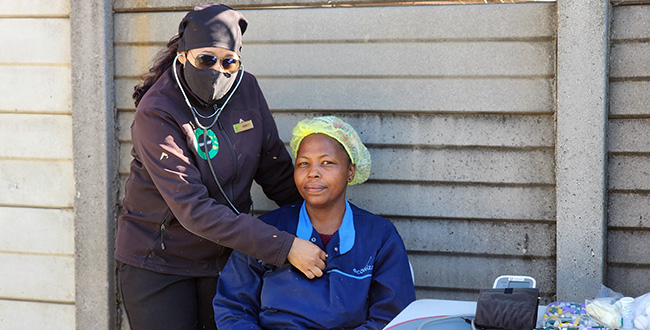Medical Surveillance

Medical surveillance, as required by the Occupational Safety and Health Act, is a program of medical examinations and tests designed to detect and monitor potential health effects from hazardous chemical or physical exposures in the workplace to enable early treatment or other steps to protect employee health.
Medical surveillance is conducted in conjunction with other employer measures – such as workplace practices and engineering controls – to prevent occupational injury and illness.
American employees use tens of thousands of chemicals every day. While many of these chemicals are suspected of being harmful, relatively few chemicals are regulated in the workplace.
Employers have a moral and legal responsibility to protect their workers, and any other person within the boundaries of the workplace, against health risks and hazards that might arise from their activities.
Legislation prescribes the legal duties and rights regarding monitoring the health of workers exposed to specific health risks and hazards associated with their occupations.
Medical surveillance is a planned program to monitor the health of workers and is permissible in terms of legislation and justifiable in terms of medical evidence, conditions of employment, and the inherent requirements of the job.
Monitoring the health of workers protects and maintains the health and safety of the workforce as well as that of co-workers.
WHAT ARE THE AIMS OF MEDICAL SURVEILLANCE?
- To determine if the employee’s present state of health and determine if an employee is physically and mentally fit to perform the appointed duties associated with the job.
- To identify underlying conditions that may be negatively influenced by the job or place of work.
- To record and inform the employer of any area and/or job restrictions placed on an employee to ensure safe placement.
- To record baseline health indicators against which subsequent changes in the employee’s health status can be evaluated, prompting corrective intervention.
- To detect occupational disease at an early stage and proactively intervene to safeguard the employee and employer alike.
- To recommend necessary actions to protect and maintain the health of workers and comply with legal requirements concerning the work.
In order to identify what type of medical surveillance needs to be conducted on which employee, a company is required to conduct an assessment of potential hazards in the areas of noise, illumination (light), ventilation, temperature, ergonomics, and hazardous substances. This assessment is commonly referred to as a “Hygiene Survey”.
The frequency of performing a Hygiene Survey is determined by the nature of the exposure. If the hazardous exposure is to a hazard that has a control limit the cycle is every 12 months. If the hazard does not have a control limit the cycle is every 24 months.
Leave a message
AT A GLANCE
- Over 2000 clients nationwide
- A successful >7-year track record
- 25000 client employees nationwide
- 80% of our clients have stayed with us for over 7 years
- Flexibility
- Cost effective solutions
- Authors of the “Working at Heights” code of practice for NOSA
